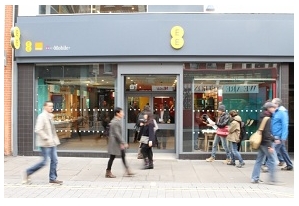EE has launched the UK’s first superfast 4G broadband services for consumers and businesses in 11 cities.
EE 4G services are now available in Bristol, Birmingham, Cardiff, Edinburgh, Glasgow, Leeds, Liverpool, London, Manchester, Sheffield and Southampton. The company also opened 700 high street stores.

There are plans for the service to also be available in Belfast, Derby, Hull, Nottingham and Newcastle by the end of the year.
4G will enable businesses to consume high bandwidth services such as video conferencing and the use of video.
A number of handsets are available and compatible with the 4G network, including Apple’s iPhone 5, Samsung’s Galaxy S3 and the HTC One XL.
Olaf Swantee, chief executive officer (CEO) at EE, said the launch is just the beginning of EE’s plans.
“We’re investing £1.5 billion in our network to be the first company to offer mobile 4G in the UK, alongside the biggest 3G network,” said Swantee.
EE released details of a survey about the benefits of 4G to businesses. It found that 74% of UK businesses plan to use 4G within 12 months. Newcastle’s businesses show highest demand and sales staff and the CEO will be first to use 4G.
It also revealed that 58% of UK businesses expect 4G to increase productivity and 38% said it will improve employee well-being and motivation.
EE has released its tariffs for the UK's first 4G contracts, which will be available from the end of October.
In a recent interview with Computer Weekly, Accenture CIO Frank Modruson said falling connectivity prices have made video a genuine business tool.
“The cost of video is dropping and it is becoming so inexpensive to communicate via video," he said.
Accenture uses video in both its internal operation and its services business.
“Our clients love being able to meet experts without them having to fly out for a one hour meeting,” says Modruson.
He says businesses should take a look at how consumers are using video: “We have it at home, but we have not yet brought it into the workplace. But it’s coming.”
“Ten years ago, doing what you do on Skype would have cost thousands of dollars. Now it is on everyone’s desktop and is almost free.”




